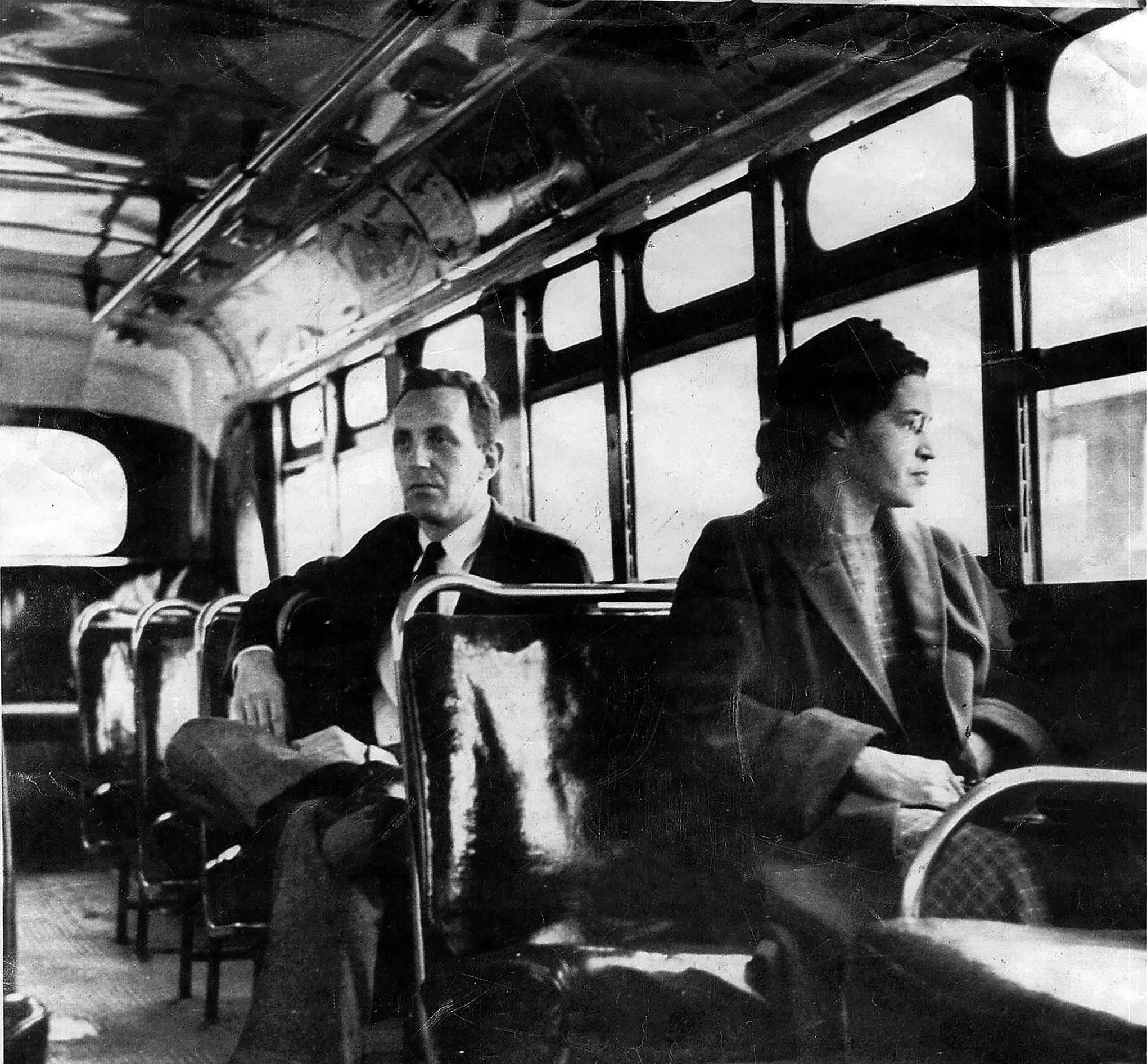Rosa Park - The Activist
Rosa had spent her life growing up in the segregated south. Because of the Jim Crow laws, Rosa and other Black Americans in Montgomery were not given equal treatment. Rosa had to deal with daily discrimination, including not being allowed to sit in the front section of a public bus. By law, Black Americans were required to sit in the back of the Montgomery buses – behind white riders. In practice, bus drivers could ask that a Black passenger give up their seat so that a white passenger could sit down.
On December 1, 1955, Rosa took the bus home from work at the Montgomery Fair department store. She sat in the first row of the “colored” section. As they continued driving along, a white man was left without a seat because the “white” section was full. Rosa and three other passengers in the front row of the “colored” section were told by the bus driver to get up so that the white man could sit down. While the other three passengers got up, Rosa refused.


Rosa later said, “People always say that I didn’t give up my seat because I was tired, but that isn’t true. I was not tired physically, or no more tired than I usually was at the end of a working day. I was not old, although some people have an image of me as being old then. I was forty-two. No, the only tired I was, was tired of giving in.”
Key Point
For peacefully demonstrating opposition to segregation, Rosa was arrested and on December 5, was found guilty of violating segregation laws. However, it was because of Rosa’s brave refusal to give up her seat on the Montgomery bus that another central transformational civil rights leader, Rev. Martin Luther King Jr, was launched to the front of the movement.
